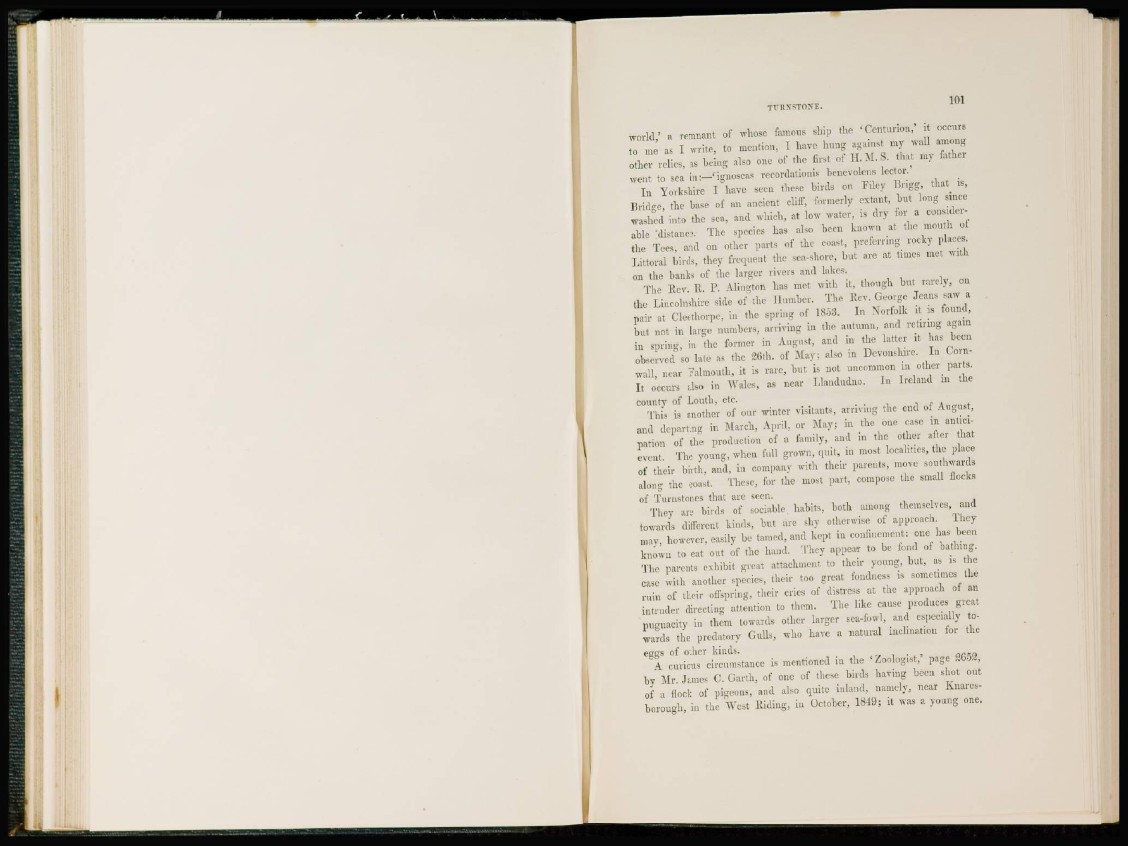
world,' a remnant of whose famous ship the 'Centurion,' it occurs
to me as I write, to mention, I have hung against my wall among
other relics, as being also one of the first of H. M. S. that my father
went to sea in:—'ignoscas rcrordationis benevolens lector.'
I n Yorkshire I have seen these birds on Filey Brigg, that is,
Bridge, the base of an ancient cliff, formerly extant, but long since
washed into the sea, and which, at low water, is dry for a considerable
distance. The species has also been known at the mouth of
the Tees, and on other parts of the coast, preferring rocky places.
Littoral birds, they frequent the sca-shore, but are at times met with
on the banks of the larger rivers and lakes.
The Rev. R. P. Alington has met with it, though but rarely, on
the Lincolnshire side of the Ilumber. The Rev. George Jeans saw a
pair at Cleethorpc, in the spring of 18-3.3. In Norfolk it is found,
but not in large numbers, arriving in the autumn, and retiring again
in spring, in the former in August, and in the latter it has been
observed so late as the 96th. of May; also in Devonshire. In Cornwall,
near Falmouth, it is rare, but is not uncommon in other parts.
I t occurs also in Wales, as near Llandudno. In Ireland in the
county of Louth, etc.
This is another of our winter visitants, arriving the end of August,
and departing in March, April, or May; in the one case in anticipation
of the production of a family, and in the other after that
event. The young, when full grown, quit, in most localities, the place
of their birth, and, in company with their parents, move southwards
along the coast. These, for the most part, compose the small flocks
of Turnstones that are seen.
They arc birds of sociable habits, both among themselves, and
towards different kinds, but are shy otherwise of approach. They
may, however, easily be tamed, and kept in confinement: one has been
known to eat out of the hand. They appear to be fond of bathing.
The parents exhibit great attachment to their young, but, as is the
case with another species, their too great fondness is sometimes the
r u i n of their offspring, their cries of distress at the approach of an
intruder directing attention to them. The like cause produces great
pugnacity in them towards other larger sea-fowl, and especially towards
the predatory Gulls, who have a natural inclination for the
eggs of other kinds.
A curious circumstance is mentioned in the 'Zoologist,' page 2G52,
by Mr. James 0. Garth, of one of these birds having been shot out
of a flock of pigeons, and also quite inland, namely, near Knaresborough,
in the West Riding, in October, 1849; it was a young one.